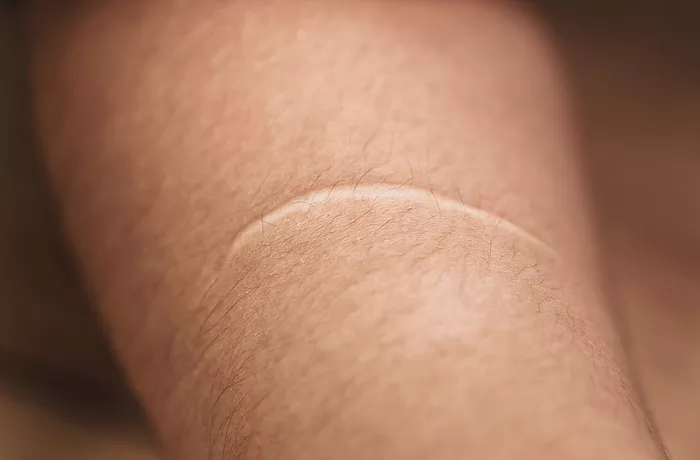Scars are a natural part of the healing process, but they can be a source of concern for many people due to their appearance. Improving the look of scars involves a combination of medical treatments, home remedies, and lifestyle adjustments. This article delves into the various methods and strategies that can make scars look better, helping you achieve smoother, less noticeable skin.
Understanding Scar Formation
Before exploring treatments, it’s essential to understand how scars form. Scars result from the biological process of wound repair in the skin and other tissues. Following an injury, the body produces collagen fibers to mend the damage, resulting in a scar. The appearance of a scar can vary based on several factors, including the type and depth of the wound, the location on the body, and the individual’s skin type.
Types of Scars
Hypertrophic Scars: Raised scars that do not extend beyond the boundary of the original wound. They are often red or pink and may become less noticeable over time.
Keloid Scars: Raised scars that extend beyond the original wound boundaries. They are more common in individuals with darker skin tones and can continue to grow even after the wound has healed.
Atrophic Scars: Depressed scars that sit below the surrounding skin level. They often result from conditions like acne or chickenpox.
Contracture Scars: These scars cause the skin to tighten, which can restrict movement. They often result from burns.
Stretch Marks: A form of scarring caused by the stretching of the skin, commonly due to rapid growth or weight changes.
Medical Treatments for Scar Improvement
1. Topical Treatments
Topical treatments are often the first line of defense in scar management. These include over-the-counter creams, gels, and ointments designed to improve the appearance of scars.
Silicone Gel and Sheets: Silicone is widely recognized for its effectiveness in treating scars. Silicone sheets or gels can hydrate the scar tissue, reduce redness, and flatten raised scars. They should be used consistently for the best results.
Hydrocortisone Creams: These creams can help reduce inflammation and itching associated with scars, particularly hypertrophic and keloid scars.
Scar Creams with Onion Extract: Products like Mederma contain onion extract, which is believed to improve the texture and color of scars.
2. Injectable Treatments
Injectable treatments can be particularly effective for hypertrophic and keloid scars, as well as for atrophic scars.
Corticosteroid Injections: These are used to flatten and reduce the size of hypertrophic and keloid scars. They help by reducing inflammation and slowing the production of collagen.
Dermal Fillers: Fillers like hyaluronic acid can be injected into atrophic scars to raise them to the level of the surrounding skin, improving their appearance.
3. Laser Therapy
Laser treatments are among the most effective methods for scar improvement, suitable for various scar types.
Fractional Laser Resurfacing: This technique uses laser beams to create microscopic wounds in the scar tissue, promoting collagen production and skin remodeling. It is particularly effective for atrophic scars.
Pulsed Dye Laser (PDL): PDL targets blood vessels in hypertrophic and keloid scars, reducing redness and flattening the scar.
Ablative Lasers: These lasers remove the top layer of skin, which can help smooth out raised scars and stimulate new skin growth.
4. Surgical Treatments
In some cases, surgical intervention may be necessary to improve the appearance of scars.
Scar Revision Surgery: This involves removing the old scar and stitching the skin back together in a more aesthetically pleasing manner. It’s often used for large or very noticeable scars.
Punch Excision: A technique used for deep acne scars, where the scar is surgically removed and the wound is closed with stitches or a skin graft.
Home Remedies and Natural Treatments
While medical treatments are highly effective, several home remedies can also contribute to improving scar appearance. These remedies are often used in conjunction with medical treatments for optimal results.
1. Essential Oils
Essential oils have been used for centuries to improve skin health and can be beneficial for scar treatment.
Lavender Oil: Known for its healing properties, lavender oil can help reduce the appearance of scars by promoting cell regeneration.
Tea Tree Oil: This oil has antiseptic properties that can prevent infection and reduce inflammation, aiding in the healing process.
Rosehip Seed Oil: Rich in fatty acids and vitamins, rosehip seed oil can improve skin texture and color, making scars less noticeable.
2. Aloe Vera
Aloe vera is a natural healer known for its soothing and moisturizing properties. Applying fresh aloe vera gel to a scar can help reduce inflammation, promote healing, and improve skin elasticity.
3. Honey
Honey, particularly Manuka honey, has natural antibacterial and healing properties. Applying honey to a scar can keep the area hydrated, reduce inflammation, and promote tissue regeneration.
4. Lemon Juice
Lemon juice acts as a natural bleaching agent, which can help lighten scars. Its high vitamin C content also promotes collagen production, improving skin texture. However, it should be used cautiously as it can make the skin photosensitive.
5. Vitamin E
Vitamin E is a powerful antioxidant that can help heal scars by promoting cell regeneration. Applying vitamin E oil to a scar can improve its texture and reduce redness.
Lifestyle Adjustments for Scar Improvement
In addition to treatments, certain lifestyle adjustments can significantly impact scar healing and appearance.
1. Sun Protection
Exposure to the sun can worsen the appearance of scars, making them darker and more noticeable. It’s crucial to protect scars from UV rays by applying sunscreen with at least SPF 30, wearing protective clothing, or using a physical barrier like a hat or bandage.
2. Hydration
Keeping the skin hydrated is essential for scar healing. Drinking plenty of water and using moisturizers can help maintain skin elasticity and promote the healing process.
3. Nutrition
A balanced diet rich in vitamins and minerals can support skin health and scar healing.
Vitamin C: Essential for collagen production, which helps in the formation of healthy skin tissue.
Vitamin A: Promotes cell regeneration and repair.
Zinc: Plays a crucial role in wound healing and can help reduce inflammation.
4. Avoiding Smoking and Alcohol
Smoking and excessive alcohol consumption can impair the body’s healing process and negatively impact skin health. Quitting smoking and reducing alcohol intake can improve overall skin appearance and scar healing.
Innovative Technologies in Scar Treatment
Advancements in medical technology have introduced innovative treatments that offer promising results for scar improvement.
1. Microneedling
Microneedling involves using a device with fine needles to create tiny punctures in the skin, stimulating collagen production and promoting skin regeneration. This technique can be effective for various types of scars, including atrophic and hypertrophic scars.
2. Radiofrequency Therapy
Radiofrequency (RF) therapy uses energy waves to heat the deep layers of the skin, promoting collagen production and tightening the skin. RF therapy can improve the texture and appearance of scars, particularly when combined with microneedling.
3. Platelet-Rich Plasma (PRP) Therapy
PRP therapy involves injecting a concentration of the patient’s own platelets into the scar tissue. The growth factors in PRP promote healing and tissue regeneration, improving the appearance of scars.
4. Cryotherapy
Cryotherapy involves freezing scar tissue with liquid nitrogen, causing it to slough off. This treatment is often used for keloid and hypertrophic scars to reduce their size and improve their appearance.
Psychological Impact of Scars and Emotional Well-being
Scars can have a significant psychological impact, affecting self-esteem and emotional well-being. Addressing the emotional aspects of scarring is an important part of the healing process.
1. Acceptance and Self-Love
Embracing scars as part of one’s unique story can help build self-confidence and reduce the emotional burden of having visible scars. Practicing self-love and acceptance is a powerful step towards emotional healing.
2. Support Groups and Counseling
Joining support groups or seeking counseling can provide emotional support and practical advice from others who have experienced similar challenges. Talking to a mental health professional can also help address any underlying issues related to self-esteem and body image.
3. Cosmetic Options
For those who are particularly self-conscious about their scars, cosmetic options such as makeup or tattooing can help improve the appearance of scars. Specialized makeup products designed for scar coverage can provide temporary relief, while medical tattooing can offer a more permanent solution.
Conclusion
Improving the appearance of scars is a multifaceted process that involves medical treatments, home remedies, lifestyle adjustments, and psychological support. By understanding the nature of scars and exploring various treatment options, individuals can achieve smoother, less noticeable scars and boost their confidence. Whether through advanced medical treatments, natural remedies, or supportive emotional strategies, there are numerous ways to make scars look better and improve overall skin health.
[inline_related_posts title=”You Might Be Interested In” title_align=”left” style=”list” number=”6″ align=”none” ids=”9022,8931,8844″ by=”categories” orderby=”rand” order=”DESC” hide_thumb=”no” thumb_right=”no” views=”no” date=”yes” grid_columns=”2″ post_type=”” tax=””]
































